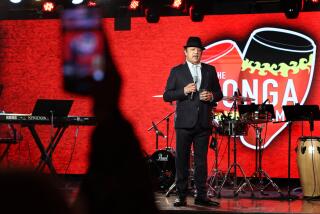Palladium: Where Mambo Ruled
In many ways, the history of New York’s Palladium ballroom is the history of Afro-Cuban music. During the 1950s, the fabled venue became a mecca for the mambo, a showcase for the best bands and the sensational dancers who flocked to see them.
A new documentary, “The Palladium: Where Mambo was King,” captures the spirit of what its narrator calls “a special time and a remarkable place” for Latin music. The two-hour program, which can be seen at 9 p.m. Sunday on Bravo as part of the channel’s weekend “Latin Sights and Sounds Festival,” features vintage footage and current interviews with musicians and dancers who still light up with the thrill of having been there.
It includes one of the last interviews with the late timbalero Tito Puente, part of a troika of mambo superstars, with Tito Rodriguez and Machito, who competed fiercely to top each other on stage. Other interviews include Ruben Blades, Quincy Jones, Ray Barretto and Eddie Palmieri, the salsa rebel who describes how he tried to pull the Palladium’s clientele across the street until he was also invited to perform at the “House of the Mambo.”
The documentary offers a brief history of Afro-Cuban music and its fusion with jazz in New York, catalyzed in 1939 when Mario Bauza joined forces with Cab Calloway. Though the story will be familiar to salsa aficionados, it’s retold here in passionate accounts with narrative gusto and fresh detail.
The show is at its best when re-creating the revered venue’s charged atmosphere. “The night you went to the Palladium, you were a princess,” recalls one fan. “There was this sense that you had entered another world.”
More to Read
The biggest entertainment stories
Get our big stories about Hollywood, film, television, music, arts, culture and more right in your inbox as soon as they publish.
You may occasionally receive promotional content from the Los Angeles Times.










